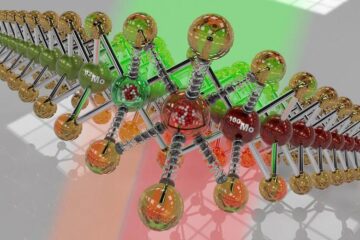Latest News

US researchers find first conclusive evidence that lead is linked to male infertility
US fertility experts today (Thursday 6 February) published the first conclusive evidence that lead is linked to male infertility.
A report in Europe’s leading reproductive medicine journal Human Reproduction[1] concludes that exposure to lead damages sperm function and may be a contributory cause of unexplained male infertility.[2]
The findings have led principal investigator Dr Susan Benoff to urge doctors to measure lead in seminal plasma when evaluating men from couples with unex

NASA satellite helps scientists see effects of earthquakes in remote areas
The unique capabilities of a NASA earth-observing satellite have allowed researchers to view the effects of a major earthquake that occurred in 2001 in Northern India near the border of Pakistan.
Lead author Bernard Pinty of the Institute for Environment and Sustainability in the Joint Research Centre of the European Commission, Ispra, Italy, and colleagues from the U.S., France and Germany, used the Multi-angle Imaging SpectroRadiometer (MISR) instrument on NASA’s Terra satellite to o

Neurofibromin: It’s so degrading
Dr. Tyler Jacks of MIT and the Howard Hughes Medical Institute, Karen Cichowski of Brigham and Women’s Hospital and Harvard Medical School, and their colleagues have discovered how neurofibromin, a key regulator of the ras oncogene, is, itself, regulated. This discovery has promising therapeutic implications for the treatment of neurofibromatosis type I (NF1), a common hereditary disease that results from mutations in the neurofibromin gene, as well as the ~30% of human tumors that have altered Ras a

Brain images reveal effects of antidepressants
The experiences of millions of people have proved that antidepressants work, but only with the advent of sophisticated imaging technology have scientists begun to learn exactly how the medications affect brain structures and circuits to bring relief from depression.
Researchers at the University of Wisconsin-Madison and UW Medical School recently added important new information to the growing body of knowledge. For the first time, they used functional magnetic resonance imaging (fMRI)–tech

Visual analysis of 18F-FDG PET Scans: Effective prognostic tool for cervical cancer patients
When developing a treatment plan for cervical cancer, it is important to be able to determine a patient’s prognosis, ideally at the time of diagnosis. Existing methods to arrive at a prognosis can be time consuming, inaccurate and may require specialized software. Therefore, doctors from the Washington University School of Medicine developed – and validated – an accurate, reproducible and quick prognostic system.
The researchers created a grading scale to use in conjunction with a simp

The Fragile X syndrome protein as RNA distribution hub
New technique tracks RNAs associated with the protein responsible for Fragile X
The process of turning genes into protein makes the insides of cells terribly crowded and complicated places. Signals tell machinery to transcribe the DNA of genes into messenger RNA (mRNA) whose translation into protein has to be coordinated with everything else that is happening within the cell. Fortunately, there are RNA binding proteins to organize mRNAs. These proteins are so critical that the loss of











